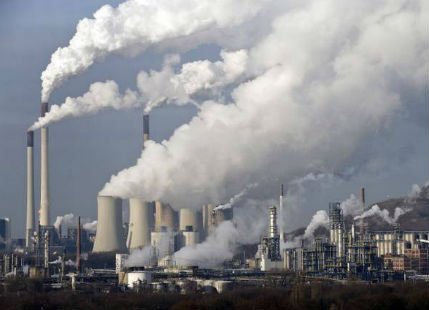
Problems
Bhiwadi is a city in the Alwar district of Rajasthan state in India. It is well-known as an industrial hub. The town itself is spread over 5,000 acres with about half of that devoted to housing. The remainder is used by industries of various sizes ranging from steel mills and furnaces to automobile and electronics manufacturing plants.
Factors responsible for severe air pollution in Rajasthan's Bhiwadi
The IQAir report ranks most polluted on the annual average of PM2.5 concentration (ug/m³). PM2.5 particulate matter consists of fine aerosol particles measuring 2.5 microns or smaller in diameter. The most common natural sources for PM2.5 are dust storms, sandstorms, and wildfires. Common chemical constituents such as sulfates, nitrates, black carbon, and ammonium, and common human-made sources like internal combustion engines, power generation, industrial processes, agricultural processes, construction, and residential wood and coal burning also make up the air quality. Since the level of pollution in Bhiwadi has always been a concern for the Rajasthan State Pollution Control Board (RSPCB), it has set up a separate regional office within the Alwar district. "Bhiwadi has multiple reasons for pollution. Not only does it have a lot of industries, but vehicular movement on the highway also contributes to the air pollution. Bhiwadi has a separate RSPCB regional office which keeps a check on pollution," said Alwar acting collector Sunita Pankaj. Bhiwadi has small- and large-scale industries for steel, automobiles and electronics. RSPCB is also keeping a close eye on Bhiwadi. "Industries are one of the causes, but the major cause of pollution is road dust, which is around 48% to 50%. Bhiwadi is geographically located close to Delhi and, in winters during Diwali, the pollution level goes up due to low velocity of air which does not disperse and remains accumulated for a long time," said an RSPCB official.
Health effects of air pollution in Rajasthan's Bhiwadi
What are the health hazards caused by Particulate Matter? Particulate Matter, of both PM2.5 and PM10 is often used as an indicator for the general levels of air pollution. It is known to affect more people than any other pollutant. The main components of PM are nitrates, sulphates, ammonia, black carbon, sodium chloride, mineral dust and water. They often attract fine metallic particles too which attach themselves to the carrier. It consists of a complex mixture of both solid and liquid particles of organic and inorganic substances that become suspended in the air. Because of its microscopic size, PM2.5 is particularly dangerous as it can easily bypass the body’s natural defence system and penetrate deeply into the lungs. From here, they can easily get into the blood. Particulate matter (PM) is one of the biggest health hazards to air pollution and according to studies, it is responsible for the deaths of millions of people every year. This means that high blood pressure, smoking, diabetes and obesity along with poor air quality and particulate matter are among the five most dangerous factors for health. What makes Particulate Matter pollution so dangerous it is not yet properly known, but research is constantly being done in order to find out why.
What can be done to improve the air quality in Bhiwadi?
Would be to control the emissions from industry by installing filtration systems on the chimneys, but this can be expensive and therefore unpopular. Vehicle emissions contribute considerably to the air pollution because many of the vehicles on the roads are old and not built to the latest standards. Replacing them, though is not an option for many users. Dried animal dung is still used as a fuel source for both cooking and heating the homes in cooler weather. This produces a lot of toxic fumes which are often released into unventilated rooms where children often accompany their mothers. Changing this traditional way of using dung as fuel will be very difficult. Many households cannot afford to buy new equipment needed to use gas or electric stoves.
Gallery
3Timelines
2022
Bhiwadi's pollution level has an air quality index of 228 in 2022. It is the most polluted city in India whose pollution is more than air pollution in Delhi. The PM 2.5 of this city is twenty times more than the maximum level recommended by the World Health Organization.
2021
At the start of the second quarter in 2021, the quality of air in Bhiwadi as classed as “Hazardous” with a US AQI reading of 366. This is in accordance with recommendations by the World Health Organisation (WHO). The recorded concentrations of the pollutants were as follows: PM2.5 - 213.5 µg/m³, PM10 - 477.9 µg/m³, ozone (O3) - 5 µg/m³, nitrogen dioxide (NO2) - 49 µg/m³ and sulphur dioxide (SO2) - 93.1 µg/m³. It currently ranks as the second dirtiest city in India.
2020
State pollution control board is keeping a close eye on Bhiwadi Bhiwadi, the industrial town in Alwar district, is known for its high pollution levels and was ranked fourth in 2020. Bhiwadi had a PM2.5 concentration of 95.5 ug/m³. Towards the end of 2020 just after the Diwali festivals pollution rises because of the fireworks used in their celebrations.
2018
Bhiwadi had a PM2.5 concentration of 125.4 ug/m³.

